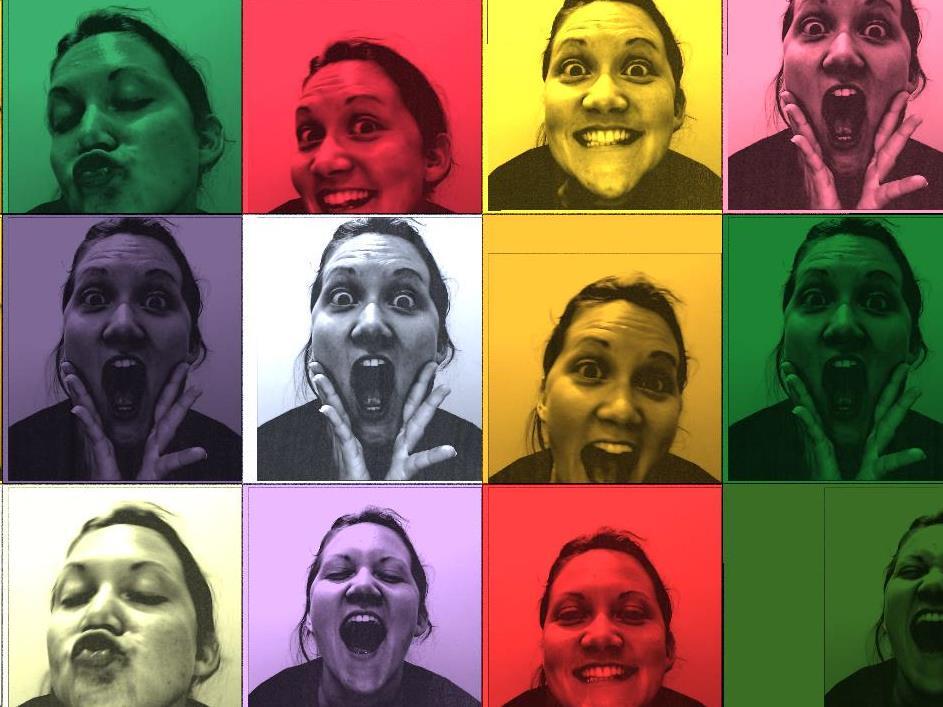Photo booth fun in the kids’ room at Andy Warhol – Ai Weiwei
The Andy Warhol – Ai Weiwei exhibition has been open for just over a month and the National Gallery of Victoria (NGV) announced today that it has already attracted more than 94,700 visitors.
This figure makes it the fastest-selling exhibition the Gallery has had for more than a decade.
And it’s early days yet. The exhibition has another three-and-a half months to run before it can really be measured against other recent top blockbusters.
But there are three very useful lessons that can already be drawn from this impressive figure.
1. Creative curators are gallery gold.
Although Ai Weiwei is one of the world’s most prominent contemporary artists, it’s a fair bet that, exhibited alone he would not have drawn these crowds. The truth is a great many of those trooping through the NGV had never heard of the great Chinese artist until his name went up next to the Gallery’s trademark water wall.
But linking him with the household name of Andy Warhol gave him a recognisable brand. Creating a joint exhibition – a world first – was the initiative of NGV Curator of International Art Max Delaney and Director of the Andy Warhol Museum in Pittsburgh Eric Shiner. (Pittsburgh will get the exhibition when it leaves Melbourne in April.)
Bringing the two artists together and exploring the commonalities between them was a work of art scholarship and insight, as evidenced in the accompanying collection of essays the two museums have published as a companion to the exhibition.
But it was also marketing genius worthy of two artists who have in common – among many other things – a shrewd interest in the relationship between art and commodity.
This is Delaney’s swansong with the NGV. He is leaving to take up the role of Director at the Australian Centre for Contemporary Art (ACCA). We can expect great things.
Read more: Why pairing Andy and Ai Weiwei makes sense
2. Audiences want contemporary art.
Coming off a year of culture wars in which money was wrested from the Australia Council by a Minister who preferred heritage arts (although mostly kept away by a new Minister with a preference taste for The Pet Shop Boys and Cinema Paradiso), the arts have again been subjected to the allegation that contemporary work does not measure up to the classics of the past.
The preferences of gallery audiences suggest the market disagrees. While the always loved and lovable Monet’s Garden was one of the NGV’s biggest sellers ever with 342,000 visitors, the contemporary local work exhibited in Melbourne Now drew more than twice that number with 753,000 visitors.
Andy Warhol and Ai Weiwei – a meeting of the 20th and 21st Centuries – is set to continue that trend, a timely reminder that audiences have an appetite for new ideas and will embrace being challenged.
Australia is well served in contemporary art from Hobart’s MONA to Brisbane’s GOMA. Sydney audiences have the Museum of Contemporary Art and the Biennale of Sydney. While Adelaide doesn’t have a dedicated contemporary art museum, the Art Gallery of South Australia’s appointment this week of a Curator of Contemporary Art is part of Director Nick Mitzevitch’s strong push towards the contemporary. In Melbourne, as well as the NGV’s adventurous programming and Delaney’s move to ACCA, there is the new Michael Buxton Centre of Contemporary Art in planning.
All this is music to the ears of living artists.
Read more: Is our blockbuster diet stale?
3. Summer is a great time for indoor culture.
Since 2004 Melbourne has concentrated its energies on its Winter Masterpieces series, drawing crowds into the pleasant temperatures of the gallery and tempting even those from warmer climes to brave the southern state in winter.
Melbourne’s major cultural institutions have invested heavily in the winter concept with considerable success. Among the most successful exhibitions were Tutankhamun and the Golden Age of the Pharaohs at the Melbourne Museum, Dali: Liquid Desire at the NGV and Pixar: 20 Years of Animation at the Australian Centre for the Moving Image.
But both Melbourne Now and Andy Warhol – Ai Weiwei are summer exhibitions, part of a conscious push to bring people into cultural institutions during the warmer months.
Museums, galleries and theatres offer the temptation of air-conditioning (Melbourne hit 42 degrees this week) and feed the school holiday monster with engaging activities for children, such as the Studio Cats room and Andy Warhol photo booth at AW/AWW). Perhaps too our appetite for the endless outdoors has been dulled a little by the skin cancer message.
Beach culture and sport will always be a part of Australian summer but cultural institutions are learning that audiences will also come inside for culture when the sun is shining.





